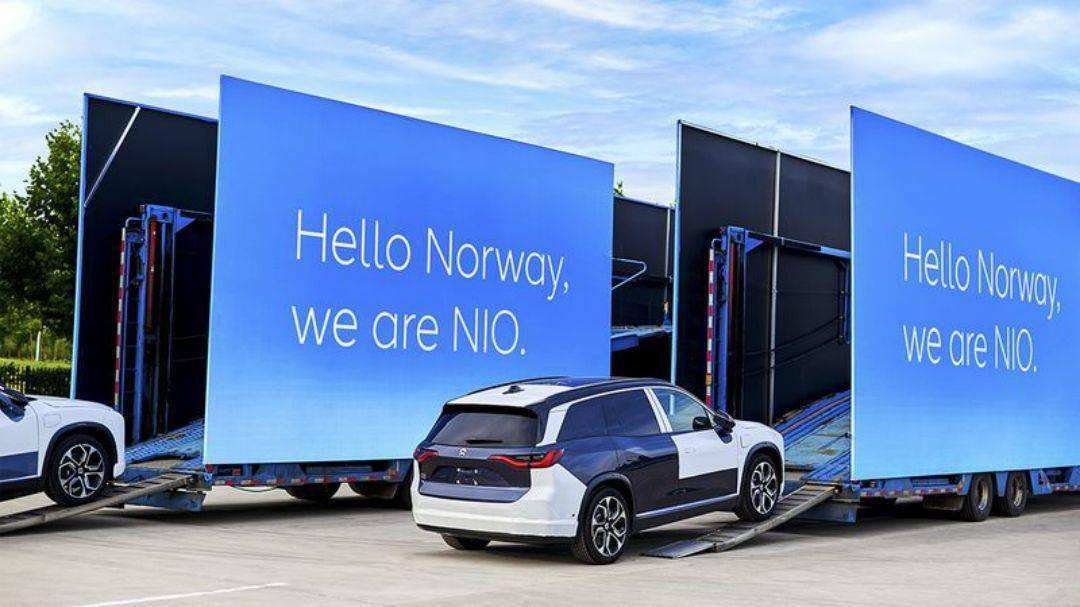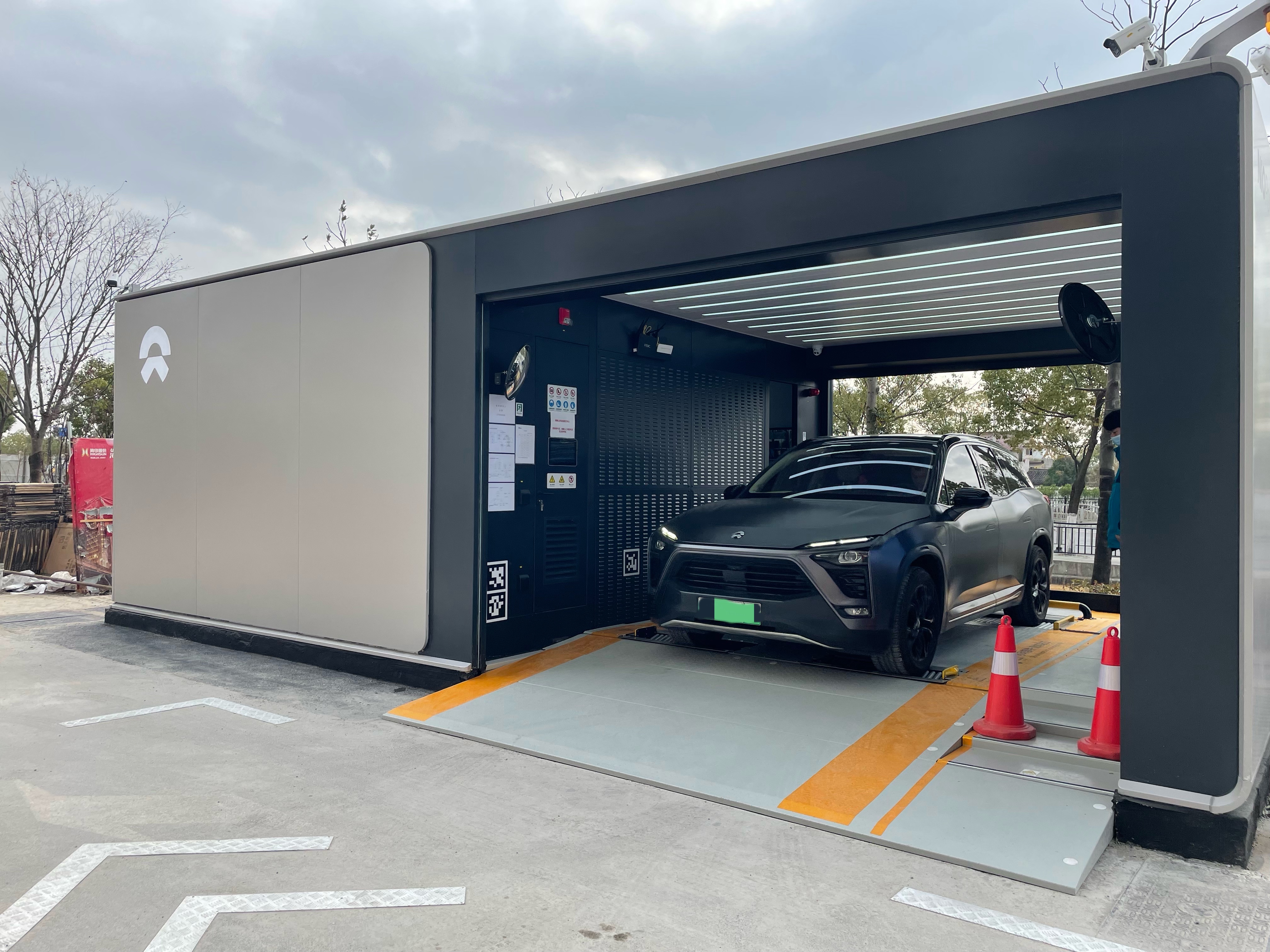Push the power exchange technology to the world? Weilai said that it will share the power exchange technology with its competitors.
According to the British "Financial Times" report, China’s new energy automobile giant Weilai is ready to share its electric vehicle power exchange platform technology with other car companies in a competitive relationship, and plans to build 1,000 power exchange stations overseas by 2025.
Peter, vice president of Weilai Europe, said in an interview that the company is willing to share its power exchange platform technology with other automakers and is in talks with domestic and foreign automakers on this matter. When asked whether sharing power exchange technology refers to authorization or other types of commercial agreements, Weilai declined to provide more details.
"We hope to become a participant in the high-end market in Europe by 2025." Peter said. Wei Lai believes that the power exchange mode can win the support of European consumers, and the scarcity of charging piles and long charging time hinder the demand growth of electric vehicles in Europe. The company hopes to expand the application scope of this technology by selling the power exchange system, so as to resolve consumers’ concerns about the shortage of charging piles.
Weilai has established 868 power exchange stations in China, and said that its customers have replaced batteries 7.6 million times. In January this year, Weilai opened the first power exchange station in Norway, and plans to establish 20 power exchange stations in that country. In the future, the company aims to build 1,000 power exchange stations in Europe and the United States by 2025, and increase the global power exchange station network to 5,000 by the middle of this century.
Weilai Automobile said that when the ES8 SUV model was launched in Norway, almost all customers chose to rent batteries separately, so that they could use the power exchange station. The one-month battery rental fee includes two free battery replacements. Consumers can choose a 100 kWh battery or a cheaper 75 kWh battery, which will be available later this year.

The so-called "battery replacement" means that when the battery of the new energy vehicle is insufficient, the battery that has been fully charged is replaced at the recent power replacement station, and the concept is similar to the charging method of the old mobile phone battery replacement. The average time required for changing power is less than 5 minutes, while the charging mode takes more than one hour under the condition of fast charging and 8-10 hours under the condition of slow charging.
Compared with the traditional charging mode, the power exchange mode has the advantages of shortening the charging time, prolonging the battery life, improving safety, having little impact on the power grid, sharing the pressure of insufficient charging piles, and directly reducing the cost of car purchase for users.
The fly in the ointment is that the construction cost of the power exchange network is much higher than that of the charging network. The Swedish Transport Authority published a research report on power exchange last year, which quoted Weilai’s data to show that the cost of building a power exchange station in China was 772,000 US dollars, including battery and site lease, while the cost of building a battery charging station was 309,000 US dollars.
Wei Lai said that it is currently seeking to reduce the construction cost of the power station. Sharing its power exchange platform with other automobile manufacturers can improve the utilization rate of the power exchange station, thus improving cost-effectiveness.

Operation situation of Weilai power station
In addition to Weilai, there are not many domestic enterprises engaged in power exchange services at present, and most of them are for service vehicles such as taxis, and there are only a handful of power exchange services for private cars. The main reason is that the power exchange standard has not been unified, the cost is too high, and it is difficult to make a profit in the short term.
Tesla, the global pioneer of electric vehicles, claimed in March last year that the mode of changing power for electric vehicles was "full of problems and not suitable for large-scale promotion". Tesla tried the power exchange strategy in the United States many years ago, but soon gave up the plan. Well-known car companies such as GM, Volkswagen and Renault also expressed doubts about the power exchange model.
It is reported that one of Weilai’s potential customers may be Geely’s Lotus Technology, which Weilai once invested in through its venture capital department. At the same time, Geely plans to build 5,000 electric vehicle exchange stations around the world by 2025, but has not indicated whether it will create its own platform.
In addition, later this year, Weilai will March into Sweden, the Netherlands and Germany. Among them, the model that Weilai plans to launch in Germany will be the ET7 sedan, which directly competes with the electric BMW 7 Series which also adopts the power exchange technology.
It is generally believed in the industry that home-filled piles, fast-filled piles and changing power stations will become the three main ways to replenish energy for electric vehicles in the future. According to the analysis of CICC’s research report, it is estimated that the number of power stations in China will reach 22,000-26,000 in 2025, with broad market prospects.
Contrary to the negative attitude of foreign car companies, the China Municipal Government is vigorously promoting the large-scale application of the electric vehicle replacement mode as an expansion of the electric vehicle energy replenishment mode.
In 2020, the power exchange mode was included in the category of "new infrastructure" and was first written into the "Government Work Report" of the two sessions. In the construction of new energy infrastructure, "building charging piles" is expanded to "adding charging piles, changing power stations and other facilities". By 2021, the government work report once again mentioned the need to increase facilities such as changing power stations.
In May, 2021, the world’s first national standard for battery replacement technology, Safety Requirements for Electric Vehicles, was approved and issued by the State Administration of Markets and the State Standardization Administration Committee, which specified the safety requirements, test methods and inspection regulations for electric vehicles with replaceable batteries, and it was implemented in November, 2021.
In October, 2021, the Ministry of Industry and Information Technology launched a pilot project on the application of new energy vehicle switching mode, and 11 cities were included in the pilot project. The goal is to produce 100,000 rechargeable cars by 2023 and build more than 1,000 power stations in pilot cities.
Since the beginning of this year, the Ministry of Industry and Information Technology has issued the "Key Points of Automobile Standardization in 2022", which requires the development of standards such as on-board power exchange system, general platform for power exchange and battery pack for pure electric vehicles. Automobile manufacturer Weilai and Geely, battery manufacturer Aodong New Energy and central enterprise China Petrochemical jointly said that they plan to open a total of 24,000 power exchange stations nationwide by 2025, while the current number of power exchange stations is about 1,400.
According to Reuters’s previous report, if the China market succeeds in promoting the power exchange model on a large scale, this change may affect the business models of global auto giants such as Tesla, Volkswagen and General Motors. These brands of electric vehicles use their own patented batteries, and Tesla even only uses the company’s charging network.
Power exchange technology has always been one of the core competitiveness of Weilai’s automobile products. Sharing power exchange technology is equivalent to Tesla allowing other brands to use its super charging network. In addition to reducing the cost of power exchange, increasing market share and accelerating the global layout, Weilai’s move is to seize more voice in the upcoming power exchange industry.